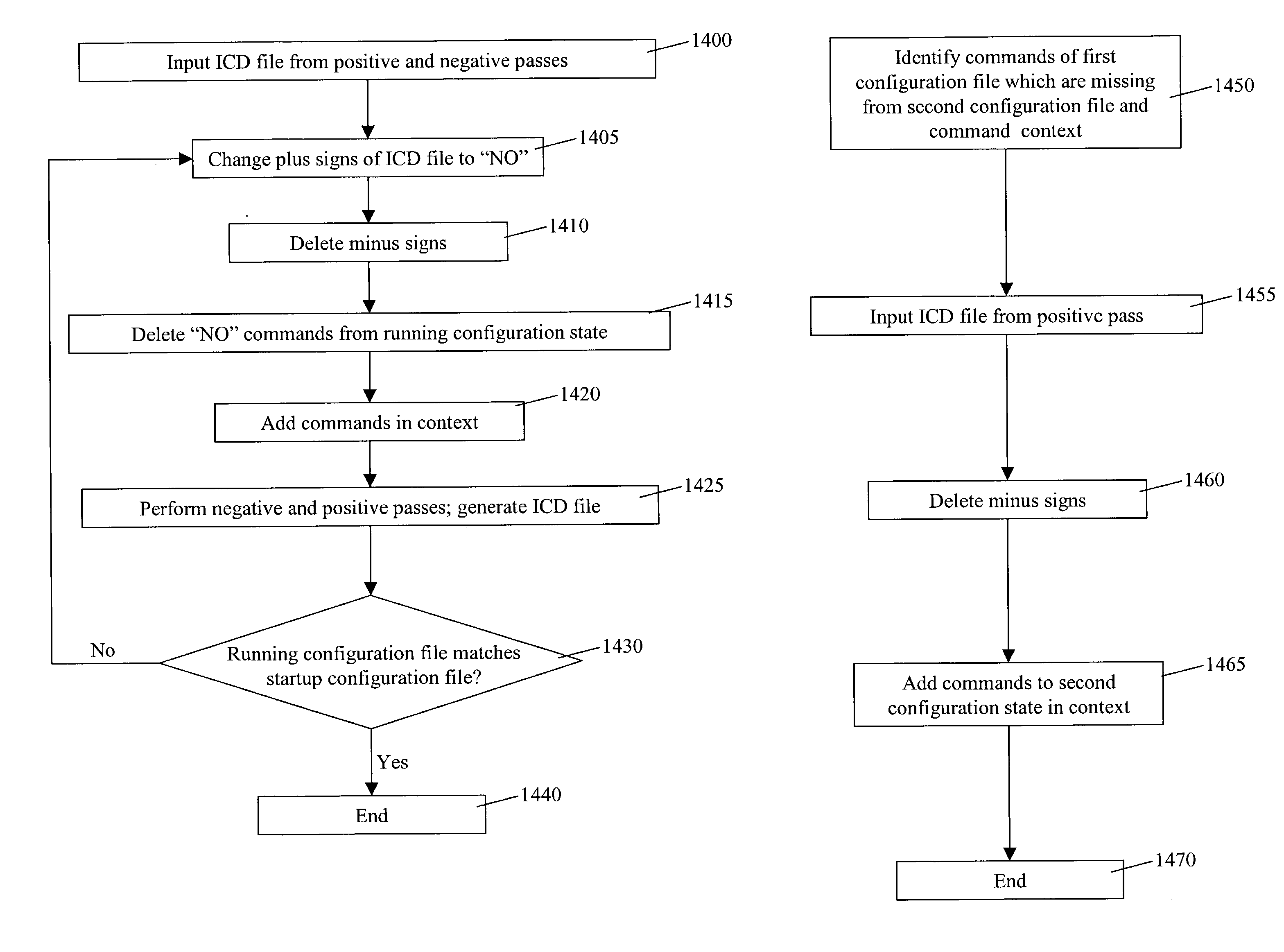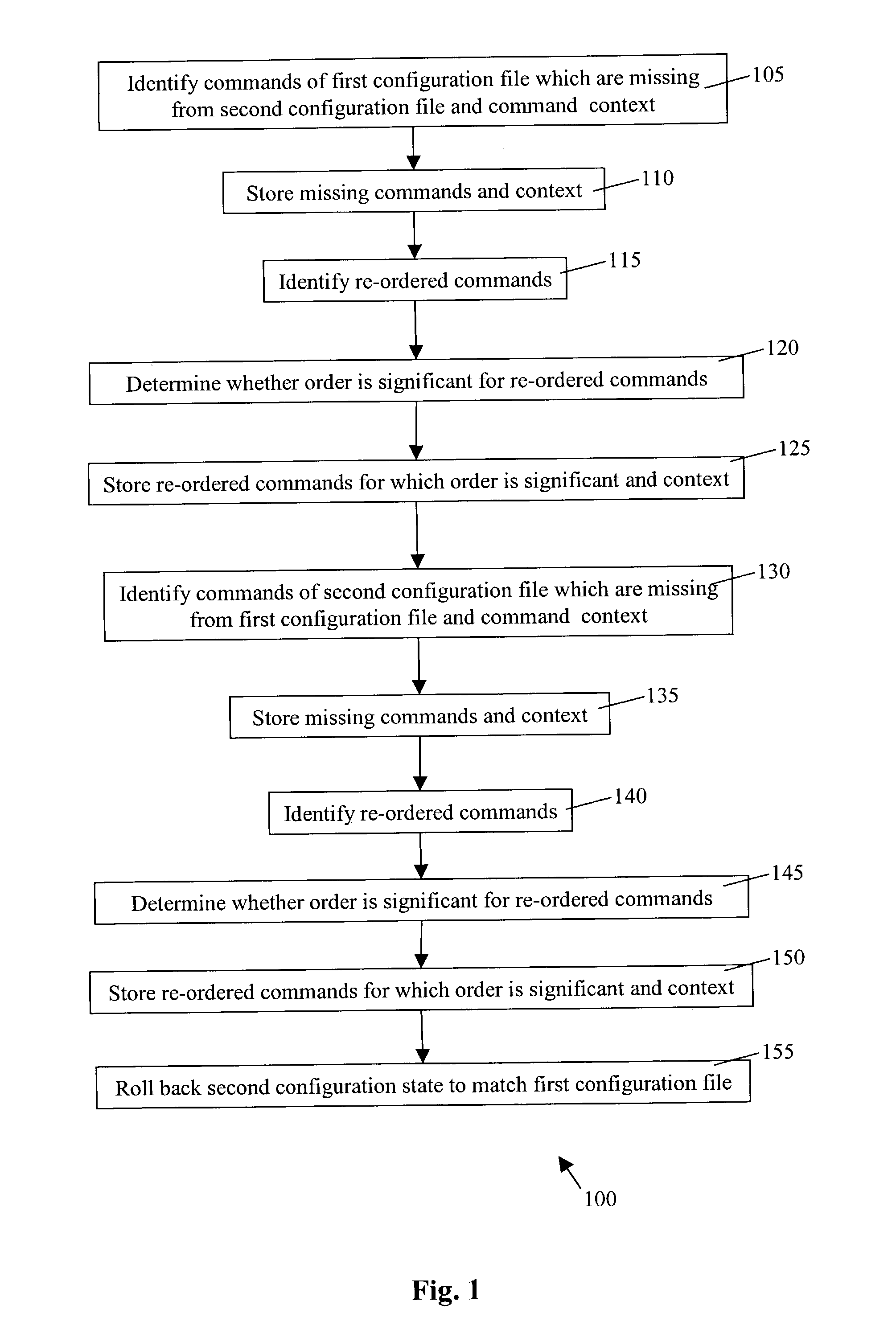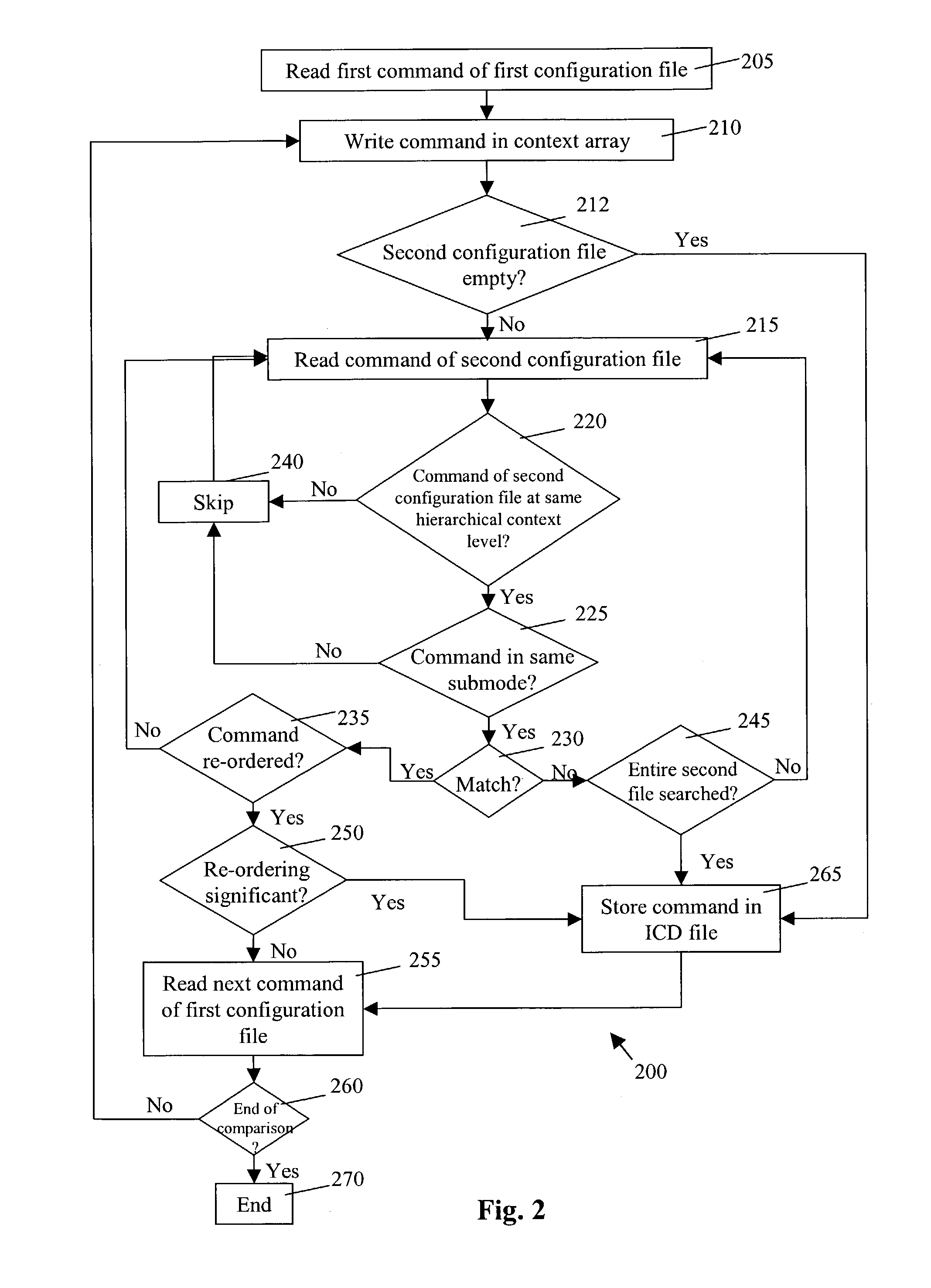Using context-sensitive intelligent diffs to modify router configurations
a router configuration and context-sensitive technology, applied in the field of data networks, can solve the problems of limited utility of textual diffs, inability to accurately apply commands for controlling the network, and inclusion of lines that have not changed,
- Summary
- Abstract
- Description
- Claims
- Application Information
AI Technical Summary
Problems solved by technology
Method used
Image
Examples
Embodiment Construction
[0039]FIG. 1 is a flow chart that outlines some high-level aspects of method 100 for performing “diff” and “rollback” operations according to some aspects of the present invention. The steps of method 100 will be described in a particular sequence, but need not be performed in that sequence.
[0040]In step 105, commands of a first configuration file are compared to commands of a second configuration file. The first configuration file may represent the configuration state of a network device at a first time and the second configuration file may represent the configuration state of the network device at a second time. Commands of the first configuration file that are not present in the second configuration file are identified. The context of these commands is also identified. Generally speaking, “context” or “hierarchical context” as used herein means the position of the command within a hierarchy (e.g., the command's submode level) and / or the command's association with other commands. ...
PUM
 Login to View More
Login to View More Abstract
Description
Claims
Application Information
 Login to View More
Login to View More - R&D
- Intellectual Property
- Life Sciences
- Materials
- Tech Scout
- Unparalleled Data Quality
- Higher Quality Content
- 60% Fewer Hallucinations
Browse by: Latest US Patents, China's latest patents, Technical Efficacy Thesaurus, Application Domain, Technology Topic, Popular Technical Reports.
© 2025 PatSnap. All rights reserved.Legal|Privacy policy|Modern Slavery Act Transparency Statement|Sitemap|About US| Contact US: help@patsnap.com



